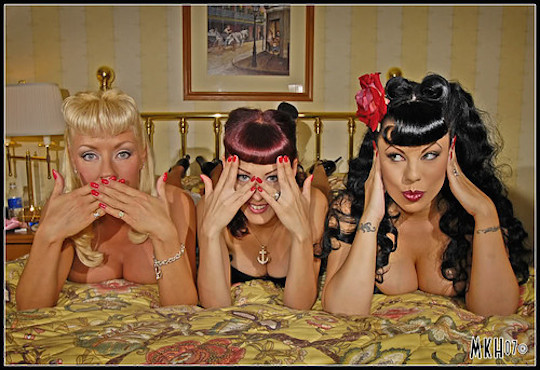I asked Gabby if he would send photos of his Wise Monkey postcard collection. He wasn’t as public with this collection as he was with his other collections on account of the special spot that a wise monkey collection held in his heart and history with Young Emily. In the end, thanks in large part to a plea from my friend, Gabby relented and sent photos of a few of his Wise Monkey postcard collection.
Along with the photos he sent a brief explanation of what he called the pictorial maxim of the three wise monkeys, which he pointed out were originally referred to as the three mystic apes. The three monkeys are Mizaru, covering his eyes, who sees no evil; Kikazaru (corrupted in English to Mikazaru) covering his ears, who hears no evil; and Iwazaru (corrupted in English to Mazaru), covering his mouth, who speaks no evil. They were first seen in a 17th century carving at the Toshogu Shrine by Hidari Jingoro.
He sent photos of three types of postcards. First, the best-known monkeys.
He of course had many more monkey postcards. Next, he included several of women posing in the wise monkey fashion.




 And in the woman department, he sent a larger group of postcards depicting geishas in the wise monkey pose.
And in the woman department, he sent a larger group of postcards depicting geishas in the wise monkey pose.












 As a bonus he sent three photos of the three wise monkeys that were not postcards. First, a World War 2 billboard:
As a bonus he sent three photos of the three wise monkeys that were not postcards. First, a World War 2 billboard:
Second, a children’s record:
And third, perhaps most exquisite, a copy of Exotique magazine:
Leonard Burtman published 36 issues of the fetish magazine Exotique between 1955 and 1959. The dominant fetish presented was female-dominant bondage. It was, in my mind, one important step out of the cultural shadows in the 1950s.
I asked my friend for his thoughts on these photos. He, of course, has seen the entire collection. He spun off for a minute on Gene Bilbrew, one of preeminent fetish artists of the 1950s, who was known by the nom de plume of ENEG – Gene spelled backwards. I steered my friend back to the postcards that harken back to Gabby’s earliest days with Young Emily. He was quick to pronounce judgment:







